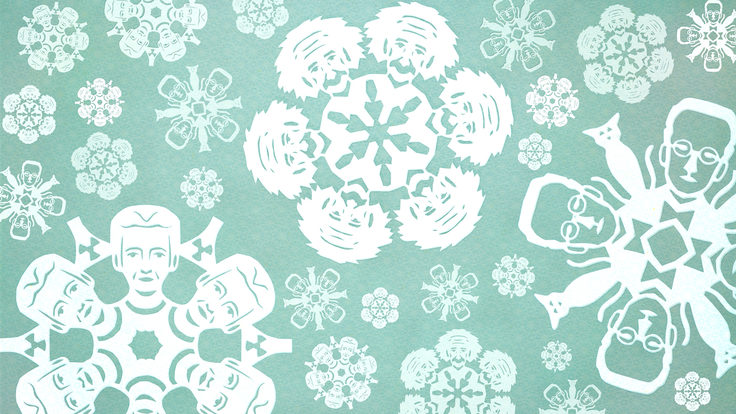This week the CMS and ATLAS collaborations at the Large Hadron Collider released more publications in a series revealing that neither experiment has detected evidence of supersymmetry.
Studies with the 2010 data from the LHC extended the search for supersymmetry, or SUSY, far beyond previous experiments. But experimentalists haven’t given up hope of finding it yet.
The idea behind SUSY is that each of the particles in the Standard Model has a massive partner particle. Scientists think these so-called sparticles are produced in pairs, which then decay into jets of normal particles plus a light SUSY particle that is stable, neutral and weakly interacting. If produced during a proton collision at the LHC, such a particle would escape undetected. Scientists are racing to find evidence of these particles, which would appear as missing energy when jets of particles spew from the collision point.
The earliest analysis from CMS and ATLAS showed that the mass of a SUSY particle is most likely heavier than about 775 giga-electron volts. Now, CMS and ATLAS are looking at more specific sets of collision events to search for signs of SUSY and other new physics.
“Before the first LHC results, the Tevatron at Fermilab ruled out masses of squarks and gluinos [the supersymmetric partners to quarks and gluons] up to 350 GeV,” said theoretical physicist Ben Allanach of the University of Cambridge in the UK, who independently analyzed the results from both CMS and ATLAS. “The first CMS results essentially doubled the exclusion limit” to 600 GeV, he said. A few weeks later, ATLAS published results improving that limit to 775 GeV. Theory suggests it should weigh in at around 1,000 GeV, or 1 TeV.
The two different limits can be boiled down to the slightly different approaches that each experiment took when analyzing the data. The first results, published by CMS, looked at events comprising jets and missing energy.
“There are only very few sources that could have this type of missing energy,” said Oliver Buchmueller, a CMS physicist from Imperial College London. In order to rule out false signals, the CMS group used a variable called αT, which Buchmueller explained is “very good at controlling the unavoidable background and picking out the very few events that might be related to new physics.” Only 13 events were selected out of the 4.2 billion proton-proton collisions recorded by CMS last year. “As exciting as they are, they turned out to be compatible with signals from sources we already know exist,” Buchmueller said.
The ATLAS collaboration also analyzed events with jets and missing energy. But they took their early analysis one step further to include a signal from a lepton, either an electron or a muon. The number of events they saw was too small compared to the background to count as evidence of new particles, so they could rule out a larger mass range.
“Our approach was very sensitive to SUSY models,” said ATLAS physicist Pascal Pralavorio of the Centre de Physique des Particules de Marseille. Because the high-energy jets deposit all of their energy in the calorimeter layers of the detector, “the missing energy is a signal for the particles that we don’t see,” he said. Another way to look for SUSY is to examine particles with strange behavior, such as those that have a velocity much smaller than the speed of light, he said.
Both collaborations continue to release results with more refined searches, for example those looking for events with signatures from photons, or one or multiple leptons. Physicists will discuss many of these results during the next two weeks at Moriond, an annual physics conference in Europe.
Although the LHC will operate at the same center-of-mass energy in 2011 -- 7 TeV -- the researchers remain optimistic that they might find evidence for SUSY.
“We can compensate for the smaller energy by simply taking more data,” Buchmueller said. The LHC aims to reach at least one inverse femtobarn this year, up from 35 inverse picobarns in 2010. Such a vast amount of data could result in 100 to 1000 times the number of possible SUSY events. If they see a significant number of events beyond what is expected from the background signal, it could be grounds for claiming a discovery.
“We will build on the lessons we learned last year and produce similar analysis this year, putting out early results then doing more refined searches,” Pralavorio said.
If there is no sign of SUSY during the 7 TeV collisions in 2011 and 2012, the researchers will have to wait until 2014, when the LHC will ramp up to 14 TeV collisions.
“I’m not nervous yet,” Allanach said. “If they go up to 14 TeV and still don’t see anything, then I’ll start to worry.”






